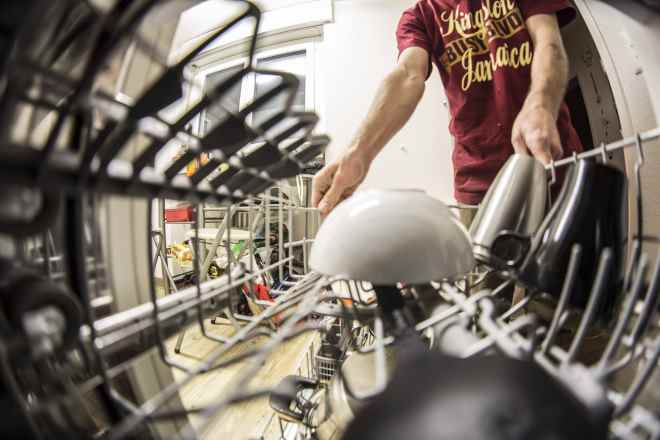Comprehensive Guide to Home Pest Prevention
Pest control today goes beyond basic sprays and traps. Professionals now use integrated methods that balance effectiveness with safety for people, pets, and the environment. From eco-friendly techniques to preventive measures, understanding modern pest control helps homeowners make informed decisions. This guide explores practical solutions and new trends shaping the industry.

Professional Pest Management: Methods and Costs
Professional pest control services offer systematic approaches to pest management that go beyond simple extermination. These services typically begin with a thorough property inspection to identify entry points, nesting areas, and conditions that attract pests. Based on this assessment, technicians develop customized treatment plans that may include barrier treatments, targeted applications, and exclusion techniques.
Most professional services follow Integrated Pest Management (IPM) principles, which prioritize prevention, monitoring, and the least toxic intervention methods possible. Treatment approaches might include combination strategies using baits, traps, growth regulators, and targeted applications of pesticides when necessary. Many companies now offer quarterly service plans that provide regular preventative treatments and monitoring to maintain pest-free conditions throughout the year.
Eco-Friendly Pest Solutions for a Healthier Home
Environmentally conscious pest management has evolved significantly in recent years, offering effective alternatives to traditional chemical treatments. These approaches focus on minimizing environmental impact while maintaining effective control of pest populations. Botanical insecticides derived from plant oils like neem, rosemary, and thyme provide natural repellent and insecticidal properties without the persistence of synthetic chemicals.
Biological controls represent another eco-friendly approach, introducing beneficial organisms that naturally prey on pest species. Examples include nematodes for controlling soil pests and certain wasp species that target caterpillar populations. Physical barriers and exclusion techniques also play an important role in eco-friendly pest management by preventing pests from entering structures in the first place. These might include door sweeps, window screens, and properly sealed foundation cracks.
Habitat modification represents another cornerstone of eco-friendly pest management, focusing on making the environment less hospitable to unwanted species. This includes reducing moisture sources, proper food storage, and landscape management practices that discourage pest establishment.
Integrated Pest Control Techniques Explained
Integrated Pest Management (IPM) represents a holistic approach to pest control that combines multiple strategies to achieve long-term results while minimizing environmental impact. This comprehensive methodology begins with proper identification of pest species, understanding their life cycles, and determining action thresholds before implementing control measures.
IPM prioritizes prevention through structural modifications and cultural practices. This includes sealing entry points, reducing clutter that provides harborage, eliminating standing water, and maintaining proper landscape management. When interventions become necessary, IPM follows a tiered approach starting with the least invasive methods such as traps, barriers, and habitat modification before considering chemical controls.
When chemical treatments are required, IPM principles dictate using the most targeted, least toxic products appropriate for the situation. Applications focus specifically on identified problem areas rather than broad-spectrum treatments. This approach not only reduces environmental impact but also minimizes the development of pesticide resistance in target populations.
Pest Control Services in Your Area: What to Expect
When engaging local pest control services, homeowners should expect a structured process beginning with a comprehensive property inspection. Professional technicians will assess both interior and exterior areas, identifying active infestations, conducive conditions, and potential entry points. Based on this evaluation, they should provide detailed recommendations and treatment options tailored to your specific situation.
Initial treatments typically address active infestations while establishing preventative barriers. Depending on the pest species and severity of the problem, follow-up visits may be scheduled to monitor effectiveness and provide additional treatments if necessary. Many companies offer service guarantees that include free return visits if pest problems persist between scheduled treatments.
Quality pest control providers prioritize communication throughout the process, explaining treatment methods, safety precautions, and preventative measures homeowners can implement. They should provide documentation detailing products used, application methods, and recommendations for maintaining pest-free conditions between service visits.
Common Pest Control Methods and Their Associated Costs
Professional pest control encompasses various treatment methodologies with corresponding cost structures based on infestation severity, property size, and treatment frequency.
| Service Type | Average Cost Range | What’s Included | Frequency |
|---|---|---|---|
| One-time General Treatment | $150-$300 | Inspection and targeted treatment for specific pest issues | As needed |
| Quarterly Prevention Plan | $300-$600 annually | Regular preventative treatments, monitoring, free return visits | 4x per year |
| Termite Treatment | $1,000-$3,000 | Inspection, barrier treatments or bait systems, monitoring | Initial + annual inspections |
| Bed Bug Treatment | $500-$1,500 per room | Multiple treatment visits, specialized equipment, follow-up | Multiple visits over 2-4 weeks |
| Wildlife Removal | $300-$800 | Trapping, exclusion, entry point sealing | Varies by situation |
Prices, rates, or cost estimates mentioned in this article are based on the latest available information but may change over time. Independent research is advised before making financial decisions.
Additional factors affecting costs include property size, construction type, infestation severity, and regional differences in pest pressure. Many companies offer tiered service packages allowing customers to select coverage levels appropriate for their needs and budget. While DIY methods may appear less expensive initially, professional services often provide more comprehensive and lasting results, particularly for serious infestations.
Conclusion
Effective home pest prevention combines proactive maintenance, environmental management, and strategic interventions when necessary. By understanding the principles of integrated pest management, homeowners can create comprehensive strategies that address immediate concerns while establishing long-term protection. Whether employing professional services or implementing DIY approaches, consistent attention to structural integrity, sanitation practices, and environmental conditions provides the foundation for maintaining a pest-free home environment.




